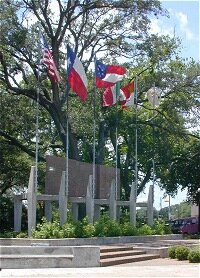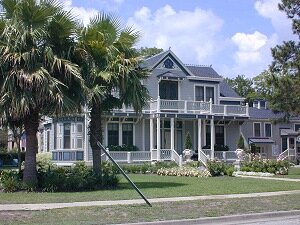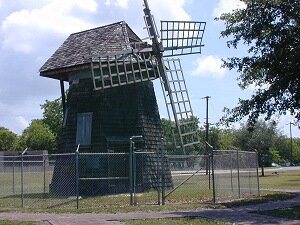

VISITORS GUIDE: VICTORIA COUNTY 
La Salle Odyssey
Victoria County's recorded history dates back to 1685 when French Explorer Robert Cavelier Sieur de La Salle established Fort St. Louis, the first European colony in Texas, on the banks of Garcitas Creek.
Artifacts, including eight cannons, from the archeology dig at Fort St. Louis will soon be on display at the Museum of the Coastal Bend in Victoria, set to open by late 2002.
The museum is one of seven La Salle Odyssey museums in the Texas Settlement Region that will also share the artifacts found aboard the La Belle shipwreck that was excavated from Matagorda Bay. Together, the artifacts will be used to tell the story of La Salle's ill-fated expedition to Texas.
Spanish Colonial
When the Spanish learned that La Salle had established a colony in their territory, they sent an expedition to find and destroy the colony. By the time they came upon it, the Fort St. Louis colonists had already been decimated by disease and hostile natives. They buried the French cannons and razed the fort.
In 1721 the Spanish returned to the former site of the French fort and built their fort (Presidio La Bahia) at the same site and nearby, Mission Espirtu Santo. The Spanish Padres found the Karankawas to be too hostile to be converted and so the mission was moved to the Guadalupe River in Victoria in 1725 (in today's Riverside Park) so that the Padres could work with the less-hostile Aranamas and Tamiques.
A few years later the mission was moved to a third site on the Guadalupe River and it was here the Spanish Padres began what would become the first great cattle ranch in Texas. The Padres were the first ranch foremen and their converts were the first cowboys. From these Spanish cattle would evolve the famed Texas longhorn. A state historical commission marker on Lower Mission Valley Road marks the location. In 1749 the mission was moved to its present location in Goliad. This cattle history, too, will soon be told at the Museum of the Coastal Bend.
Victoria was founded in 1824 by empresario Don Martin de Leon who was granted permission by the Mexican government to establish himself and 41 families on the Guadalupe River. The town was laid out in the style of traditional Spanish municipalities and even today De Leon Plaza is a favorite place to gather. The plaza includes a monument displaying the six flags that have flown over Texas, a Victorian band stand, and the "Last Stand" statue of a Confederate soldier by noted sculptor Pompeo Coppini.

German and Alsatian
Between 1843 and the Civil War, thousands of German immigrants were brought to the port of Indianola by Prince Carl Solms-Braunfels who had promised them land grants in the Texas Hill country. The project was a disaster, and many decided to remain in Victoria rather than continue on to New Braunfels or Fredericksburg. Likewise, some of the Alsatian immigrants bound for Castroville chose, instead, to make Victoria their home. Homes moved from Indianola after the 1875 hurricane are among many fine antebellum homes featured on a self-guided "walk or drive" tour available from the Victoria Chamber of Commerce or Victoria Preservation, Inc. .
Other 
Tour Victoria's recently restored 1892 courthouse designed by J. Riely Gordon ... historic St. Mary's Catholic Church ... the Texas Zoo in Riverside Park that features animals native to Texas ... the Rose Garden in Riverside Park ... Victoria Botanical Gardens ... Grist Mill in Memorial Park ... McNamara Museum ... the Nave Art Museum ... and the McFaddin Caf at McFaddin, an authentic ranch town.
